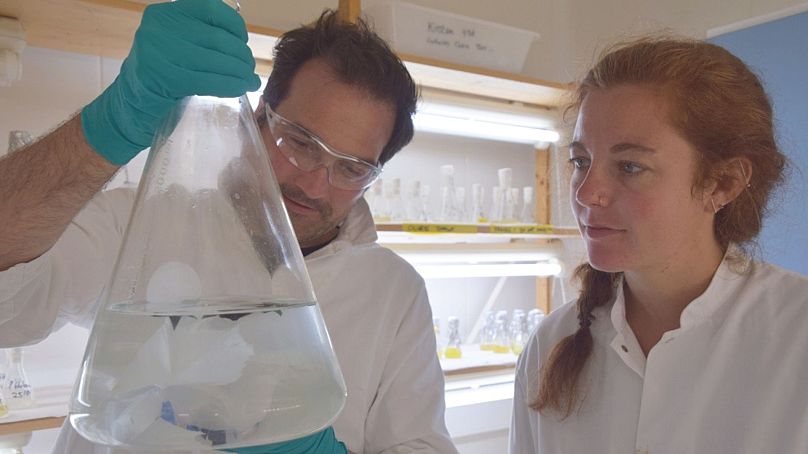When plastic enters the ocean, sunlight degrades it into “bite sized chunks”. Then bacteria eat some of it, researchers believe.
Where does the ‘missing plastic’ in our oceans go? Bacteria eat some of it, scientists have found.
Around 12 million tonnes of plastic enter the oceans every single year. But sampling surveys only ever detect about one per cent of this deluge.
Scientists at the Royal Netherlands Institute for Sea Research (NIOZ) think they’ve found a ‘jigsaw piece’ of this puzzle: bacteria are devouring it.
When plastic enters the ocean, sunlight degrades it into “bite sized chunks”, explains Maaike Goudriaan, a doctoral student of NIOZ.
It is then devoured by the bug bacterium Rhodococcus ruber, which digests it and excretes carbon dioxide.
“This is the first time we have proven in this way that bacteria actually digest plastic into CO2 and other molecules,” Goudriaan says.
“This is certainly not a solution to the problem of the plastic in our oceans. It is, however, another part of the answer to the question of where all the 'missing plastic' in the oceans has gone.”
How much of the plastic in the ocean do bacteria eat?
The researchers tested their theory in a laboratory, feeding plastic to bacteria in treated seawater.
Scientists estimate that bacteria can break down about one per cent of the available plastic per year - and probably do so in the ocean.
"That's probably an underestimate," Goudriaan says.
Further research is needed to determine exactly how much of the ocean’s plastic is eaten by bacteria.
Previous studies have shown that naturally-occurring bacteria devour pollution in lakes, stemming the release of unnatural chemicals that devastate local ecosystems. In 2020, researchers in Germany discovered a strain of bacteria capable of breaking down some forms of plastic.
How bad is plastic for the planet?
Unfortunately, bacteria are not by themselves a ‘solution’. Even if they do eat one per cent of ocean plastic, the remaining 99 per cent has a devastating impact on wildlife. More than 90 per cent of the world’s seabirds have plastic in their guts.
The stubborn material takes millions of years to decompose. Of the 10 billion tonnes of plastic that have ever been created, a whopping 6 billion sit in landfill sites or pollute the environment.
Recycling can help mitigate some of the worst effects of plastics. Yet a 2022 report by the Organisation for Economic Co-operation and Development (OECD) found that just 9 per cent of plastic is successfully recycled.



















